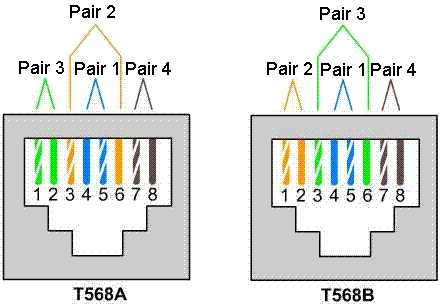
In 1985 many companies from the telecommunications industry, becoming concerned about the lack of a third party premises cabling standard and their governing body the CCIA (Computer Communications Industry Association) requested that the EIA (Electronics Industry Association) develop this standard.
The first draft of the standard wasn’t released until July of 1991 this was given the name EIA/TIA-568. The new standard provided backward compatibility for phones that used two pairs instead of just one enabling them to operate on pairs 1 and 2. Later in 1991 a Technical Systems Bulletin (TSB-36) was released with references to category 4 and 5 cables. Twelve months later TSB-40 was published addressing higher speed UTP for hardware connecting, this was revised in January of 1994 to include RJ-45 modular jacks and fly leads. At this time EIA/TIA-568 was also revised and renamed EIA/TIA 568A, the existing AT&T standard 258A was included and referred to as EIA/TIA 568B. As both these standards were popular and widely used they were both adopted into the International Standards titled Generic Cabling for Customer Premises Cabling (ISO/IEC 11801:1995).
By looking at the specifications shown in Figure 17 we see that the only difference is that the green and orange pairs are terminated to different pins, there is no difference as to what signal is used on what pin, only what colour wire is terminated onto it. Technically the standards are the same, they operate in the same manner and neither one is technically superior to another when used in Ethernet applications.
 |
| Figure 17: EIA/TIA 568A and 568B |
 |
 |
 |